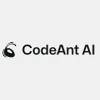Everyone knows that traditional software development is very powerful. But on the other hand, it is slow and costs too much.
With AI taking place in almost every field, software development is no more behind.

47% of companies have implemented AI and machine learning into their development and coding processes.
A new word called Vibe Coding is gaining traction, and people are curious to know more about it.
So, what exactly is vibe coding, and why is everyone talking about it?
Let’s understand!
What is Vibe Coding Exactly?
{The simplest definition is that Vibe Coding means No-Coding.}
Vibe Coding is a new way of building software where you don’t write code line by line, you get it whole through AI-code generators.
Introduced by Andrej Karpathy, the co-founder of OpenAI, in early 2025, this approach flips the traditional developer workflow on its head. Below is his tweet for you to know what exactly he said.

Instead of typing out functions and classes, you tell a powerful AI model what you want in plain English, and it handles the syntax, structure, and scaffolding for you.
Karpathy himself described it as not really coding but more like telling the AI what to do things, testing it by running, and copy-pasting whatever works. The idea is less about control and precision, and more about creative exploration, especially for quick projects or early prototypes. It’s conversational, intuitive, and at times, even fun.
The essence of vibe coding is letting go. You’re not meant to fully understand the code; you’re meant to guide it. Unlike traditional software development, which values maintainability and full comprehension, vibe coding embraces imperfection and iteration.
It’s coding for dreamers, makers, and tinkerers, those who want to build something now without worrying about the technical stuff. If English is the new programming language, vibe coding is the jazz of software creation.
Suggested Read: Top AI Tools for Coding That Make Software Development Faster
Who Should Use Vibe Coding?
- Entrepreneurs & Startup Founders: Time is money and so is development. For founders who need to convert their ideas into live apps a way faster than traditional development, Vibe Coding is for them. It removes the dependency on technical co-founders or expensive dev agencies. Just describe what your app should do, and the AI builds it.
- Non-Technical Creators & Makers: Artists, designers, writers, educators, and anyone with a vision can now bring it to life digitally. Vibe Coding turns natural language into functioning apps or tools. Whether it’s an interactive portfolio, a learning quiz, or a unique storytelling experience, the only thing you need is an idea.
- Students & Hobbyists: Curious minds, rejoice! Vibe Coding is a fantastic entry point into software development for students learning the basics or hobbyists who want to build an app without years of training. It’s a space to experiment, break things, fix them (with AI’s help), and learn by doing without fearing syntax errors or compiler warnings.
- Tinkerers & Weekend Builders: Love building things just for fun? Throw in a wild idea on Friday night, have a working prototype by Saturday morning. You don’t need to care about a perfect code or long-term maintenance, just mess around, test stuff, and enjoy.
- Content Creators & Automator: It is best for the creators who need to generate personalized social media tools or dashboards. Vibe Coding empowers content creators to build useful utilities that save their time.
How to do Vibe Coding?
Vibe Coding isn’t about writing code, it’s about describing to the AI what you want and expecting it to provide you with the same. Here’s how you can do Vibe Coding:
1. Pick Any AI-Code Generator
Choose an AI Code Generator platform like CodeComplete, Cody AI, or any LLM-powered tool that suits your needs. You can also explore Techjockey.com to find out the best AI code generator.
2. Describe the Vibe (Whatever you want to create)
Once you have selected the AI assistant, you need to write the perfect prompt. Your prompt is your magic wand. Write a clear, imaginative description of what you want to build. It can create a user-friendly and colourful invoicing software for my fashion business.
It is just an example in one sentence. You need to write a long prompt with every small instruction. The more specific and goal-oriented your request, the better the result.
3. Let the AI Compose the Code
The AI takes your instructions and generates a functional starting point. You can expect the AI to write you the whole responsive code for it that works on every device.
4. Refine, Review, Repeat
Test the code. If it’s off, tweak your prompt or ask for fixes. You don’t need to debug like a pro, just tell the AI what’s wrong, and it usually sorts it out.
5. Ship It (or Save It)
Once it works, deploy it, export it, or save it. You’ve just coded without really coding.
Top AI Tools to Start Vibe Coding
1. Ask Codi
AskCodi is a versatile AI-powered tool designed to simplify coding for developers and no-code users alike. It helps generate syntax, documentation, test cases, and database queries using natural language.
It supports more than 50 languages and can integrate with editors like VS Code. AskCodi streamlines development with intelligent features for faster, more intuitive coding. Top of Form Bottom of Form

Ask Codi
Starting Price
$ 14.99
2. Visual Studio IntelliCode
Microsoft Visual Studio IntelliCode enhances the coding experience with AI-powered, context-aware code suggestions. It offers whole line autocompletion, quick actions, and repeated edit detection, all tailored to your codebase.
Operating locally for privacy, it boosts productivity by learning from your patterns and GitHub data. IntelliCode currently supports C# in Visual Studio 2022 and Python in VS Code.

Visual Studio IntelliCode
Starting Price
$ 45.00
3. CodeComplete
CodeComplete is a self-hosted AI Code generator designed for enterprises prioritizing security and privacy. It offers intelligent code suggestions similar to GitHub Copilot while allowing full control over data.
With flexible deployment (cloud or on-prem), seamless IDE integration, and auto-correction, it boosts productivity while aligning with an organization’s coding style and standards.

CodeComplete
Starting Price
Price on Request
4. Codemaker AI
CodeMaker AI is a powerful AI code generator that streamlines software development by automating code writing, testing, and documentation. It reduces repetitive tasks with smart code suggestions, auto-generated snippets, and built-in testing tools.
Integrated with popular IDEs, it speeds up workflows and enhances code quality using AI-driven best practices and pattern recognition.

Codemaker AI
Starting Price
$ 7.50
5. Cody AI
Cody AI is an enterprise-ready, self-hosted AI Code generator that delivers GitHub Copilot-style code suggestions while prioritizing security and data privacy.
Designed for large organizations, it integrates seamlessly with existing codebases and adapts to internal coding standards. It also offers flexible deployment, either on-premises or in the cloud, to accelerate development without risking data exposure.

Cody AI
Starting Price
$ 9.00
What Vibe Coding Lacks?
Vibe Coding is something you cannot rely on if you are working on an official and important project or if you are working for a client project. It might write a code too buggy that will take time to get better or could be possibly never get right.
A non-technical person could provide any personal or confidential information that should not be shared with the AI bot. Moreover, many bugs could not be resolved by a non-developer, which could worsen the code.
Vibe-coded projects may work in the short term, but they often lack clean architecture or proper documentation. It makes future updates or collaboration difficult.
Relying too much on AI can reduce a creator’s ability to troubleshoot or scale independently, especially if the tool’s behavior changes or access becomes restricted.
Final Thoughts
Vibe Coding is redefining software development. It empowers non-developers and dreamers to build functional tools with nothing but an idea and a prompt.
While it isn’t a silver bullet for professional-grade software, it’s a remarkable leap toward democratizing development. Use it wisely, explore freely, and vibe responsibly.
Mehlika Bathla is a passionate content writer who turns complex tech ideas into simple words. For over 4 years in the tech industry, she has crafted helpful content like technical documentation, user guides, UX content, website content, social media copies, and SEO-driven blogs. She is highly skilled in... Read more





























